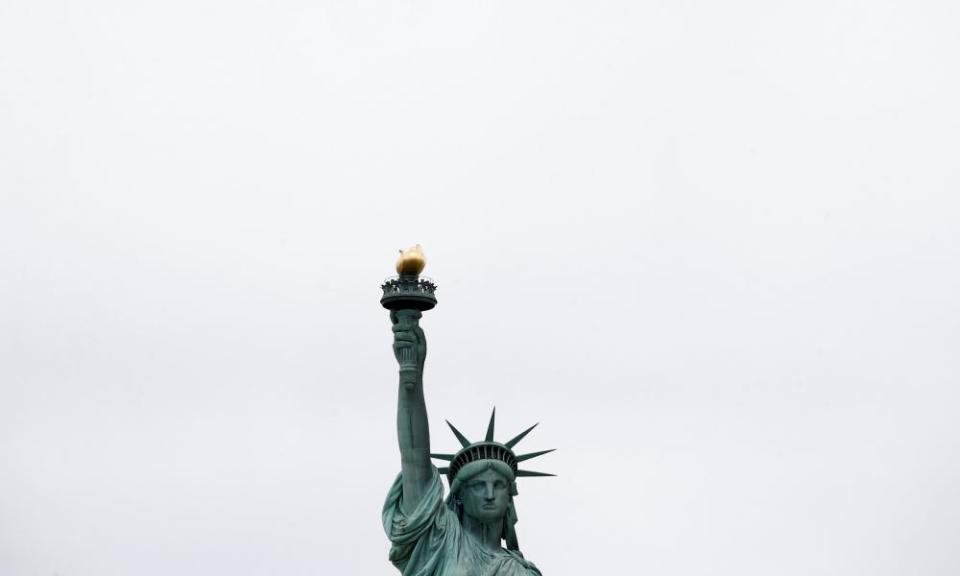Is nothing sacred? Now Trump's White House is targeting the Statue of Liberty
Stephen Miller’s tirade over the famous poem inscribed on the statue’s base makes it clear: the huddled masses can no longer breathe free in America

The surest mark of regime change is when they start attacking the statues.
Americans appreciate this as well as anyone – hence the carefully stage-manged toppling of Saddam Hussein in Firdos square in Baghdad in 2003. Stephen Miller, one of the key ideologues of the Trump regime, surely knew what he was doing when he took a symbolic axe to the Statue of Liberty in a heated argument with CNN’s Jim Acosta over the president’s proposals to drastically limit legal immigration.
In fairness, Miller did not attack the statue itself. A horde of boat-trip owners and Liberty impersonators would have lynched him if he did. But he did attack its meaning, and in particular the meaning ascribed to it when Emma Lazarus’s famous poem was added to its base in 1903, 17 years after the monument itself was completed. As Miller scolded Acosta: “I don’t want to get off into a whole thing about history here, but the Statue of Liberty is … a symbol of American liberty lighting the world. The poem that you’re referring to, that was added later and is not part of the original Statue of Liberty.”
Miller is factually correct, but as he put it himself, this is not really about history. It is about the contemporary resonance of Lazarus’s startling words, the only ones in which a state has appeared to invite not just any old immigrants, but the poorest of the poor: “Your tired, your poor, / Your huddled masses yearning to breathe free, / The wretched refuse of your teeming shore.” There has never been a time when the “wretched refuse” has been more visible on our screens. Miller was not engaging in literary criticism – he was making it clear that these people are not welcome in Trump’s USA.
This conflict about the meaning of a statue is part of a wider political and cultural war: it is really a conflict about the meaning of America. Lazarus – and her friends who campaigned to place her words at the base after her death – knew very well that they were engaging in a highly political act. The sculpture was intended to mark the connections between French and American republicanism by representing in a well-worn classical trope, the female embodiment of Liberty. Lazarus changed that meaning: in her poem the female figure is no longer abstract – she has a voice. And she gives herself a very different name: Mother of Exiles. The marrying of the poem to the image is a brilliant feminist coup and a devastating attack on American nativism.
And just as Lazarus changed the meaning of the statue, rightwingers have long wanted to change it back. The great loudmouth Rush Limbaugh, a kind of John the Baptist for the coming of Trump, argued in 2010 that Liberty is not inviting anyone in, but is rather an early neocon, taking the American flame out to the benighted world: “Lady Liberty is stepping forward. She is meant to be carrying the torch of liberty from the United States to the rest of the world. The torch is not to light the way to the United States.”
Rather unusually, Limbaugh actually hit on something. The meaning of the statue is entirely a matter of the angle of perception. Lazarus’s great imaginative act was to see it as it would be seen by exhausted, wretched but hopeful people on the decks of ships after long and often dreadful journeys. It is literally about seeing the world from the perspective of people seeking refuge and a chance to better their lives. Her statue speaks back to them the words of hope and welcome they need to hear.
And of course, this is not the perspective Miller and Trump want ever to recognise. Their torch is meant not to light the way, but to inflame the hatreds that are their only source of power.

